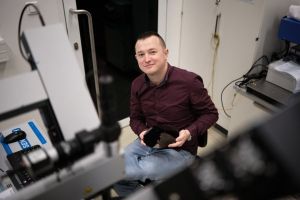The PECZIB project will develop a solar-powered device for producing hydrogen from water. Instead of a traditional setup combining solar panels and an electrolyser, the researchers aim to create a single, integrated solution that could serve as a portable mini power plant.
The concept involves combining a photoelectrochemical cell (PEC) with a light-charged zinc-ion battery (photo-ZIB). This will create a device that is entirely self-sufficient in terms of energy. This objective requires the development of new, inexpensive, and highly durable electrode materials at the same time. The researchers aim to use readily available elements like zinc, copper, and tin instead of rare and toxic materials such as platinum and cadmium, as well as ceramics.. In addition, they plan to create a new polymer membrane (BPS) to improve the purity and efficiency of the hydrogen production process.
The ultimate target is to build a compact, low-cost, and environmentally friendly device.“Photochemical hydrogen production integrated with a photo-chargeable zinc-ion battery” (PECZIB) aims to achieve a solar-to-hydrogen (STH) conversion efficiency target of over 25%, representing a challenging yet consistent research direction for photoelectrochemical materials. Such technology may in the future become a viable alternative to traditional PV systems – electrolysers.
The project has received funding from M-ERA.NET, a European network that supports research and innovation in materials science and engineering. Scientists from the AMU NanoBioMedical Centre and universities in Turkey and Romania are involved in the project.
